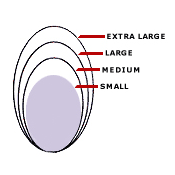Care & Quality
Manitoba Egg Farmers and the Canadian Food Inspection Agency (CFIA) work cooperatively to ensure Canadians can have confidence in the safety and quality of Grade A eggs.
Egg Farmers
Canadian farmers have been leaders in the development of on-farm HACCP standards for egg production. HACCP stands for Hazard Analysis & Critical Control Points and is the internationally accepted method for enhancing food safety. HACCP principles have been incorporated into an on-farm food safety and biosecurity program called Start Clean-Stay Clean™ to which Manitoba farmers adhere.
Graders
Eggs travel from the farm to the grading station and then to the grocer's cooler, all within a week. At the grading station, eggs are washed in a high-speed tunnel washer. Then the eggs pass over a strong light called candling, to remove any cracks or imperfections. Eggs that do not meet high standards are not classified as Grade A. Canada Grade A eggs must have a thick white (albumen) and well-centered yolk, a very small air cell and a clean, uncracked shell.
Processors
Regulated egg farmers in Manitoba produce about 69 million dozen eggs each year. About 55% of these eggs are sold to retailers and the restaurants. The remaining 45% of all grades and sizes are processed into liquid, frozen or dried form. Manitoba is home to one of the largest processors in Canada – Burnbrae Farms Ltd.
At the processing plant, special machines break thousands of eggs per day. The yolks and whites may be pasteurized and processed or special components extracted. These products are sold around the world. The shells can be recycled and used as a source of calcium. Processed eggs are used in the foodservice industry and as an important ingredient in many foods, including mayonnaise, noodles and baked goods. They are also used in pharmaceuticals, shampoo, pet foods and adhesives.
Making the Grade

Agriculture and Agri-Food Canada regulations define three quality grades that apply to eggs for sale
to customers. These are:
Grade A - sold at grocery stores
Grade B - used mostly in bakeries
Grade C - processed into pasteurized product

Extra Large - at least 63 g
Large - at least 56 g
Small - at least 42 g
Pee Wee - less than 42 g
Canadian Food Inspection Agency (CFIA) inspectors monitor graded eggs to make sure they pass rigid standards.
Blood Spots
Blood spots are occasionally found on an egg yolk. These tiny spots are not harmful and are accidentally caused
by blood or tissue rupture during formation of the egg. Less than 1% of eggs produced have blood spots.
Mass candling methods reveal most blood spots, and those eggs are removed, but, even with electronic spotters, it is impossible to catch all of them. If desired, the spot can be removed with the tip of a clean knife prior to cooking.
Yolk Colour
This is determined by the diet of the hen and does not affect the taste, nutritive value or quality of the egg.
Hens fed a larger portion of wheat in relation to other components of the diet produce eggs with pale yolks.
A diet containing a high proportion of yellow corn, for example, will result in eggs with much darker yolks.
The choice of grains depend primarily on the availability of these crops.
Shell Colour
May vary from white to brown, depending upon the strain of the hen. There is no difference in taste or nutritive
value between a brown-shelled and white-shelled egg.
Egg White Colour
Sometimes the egg white may have a greenish colour due to the presence of riboflavin (vitamin B12). Carbon dioxide
in a very fresh egg may cause the white to be cloudy. In both cases, the egg is perfectly wholesome.

